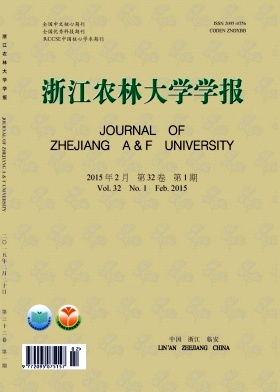Callus induction and plant regeneration in Sinopodophyllum hexandrum
doi: 10.11833/j.issn.2095-0756.2015.01.024
- Received Date: 2014-01-24
- Rev Recd Date: 2014-04-02
- Publish Date: 2015-02-20
-
Key words:
- botany /
- Sinopodophyllum hexandrum /
- tissue culture /
- callus /
- adventitious buds /
- browning
Abstract: To protect and exploit the endangered medicinal plant Sinopodophyllum hexandrum,a rapid regeneration system of tissue cultue was established. The effects of cytokinins [thidiazuron (TDZ) and 6-benzylaminopurine (6-BA)] and auxins [naphthalene acetic acid (NAA) and indole-3-acetic acid (IAA)] on callus induction, adventitious bud induction, and rooting were studied. Using mature embryos of Sinopodophyllum hexandrum as explants Murashige and Skoog medium (MS) + 0.5 mgL-1 TDZ was used to induced embryogenic callus from primary callus so that embryogenic callus developed into globular embryoid and heart-stage embryoid. Results showed differences in percentages for mediums causing callus induction for S. hexandrum with TDZ concentrations of 0.5 mgL-1 TDZ and 500 mgL-1 casein hydrolysate (CH) having the best callus induction rate of 97.8%. To avoid brownness of callus a medium of 160 mgL-1 glutathione (GSH) was used. The optimum medium for adventitious bud differentiation and proliferation was MS + 1.5 mgL-1 6-BA + 0.2 mgL-1 NAA + 500 mgL-1 CH with the highest induction rate of 53.3% and 5.2 multiple shoots. Two treatments of 0.5mgL-1 NAA and 0.5 mgL-1 IAA induced roots, but the most suitable medium was MS + 0.5 mgL-1 IAA having a rooting rate of 22.4%. The rapid propagation system of Sinopodophyllum hexandrum has been preliminarily established, which provide theory foundation for biotechnology breeding and technical guidance for large-scale production [Ch, 1 fig. 3 tab. 13 ref.]
| Citation: | JING Ning, KANG Jin, ZHANG Yaohong, KANG Yongxiang. Callus induction and plant regeneration in Sinopodophyllum hexandrum[J]. Journal of Zhejiang A&F University, 2015, 32(1): 162-166. doi: 10.11833/j.issn.2095-0756.2015.01.024 |






 DownLoad:
DownLoad: